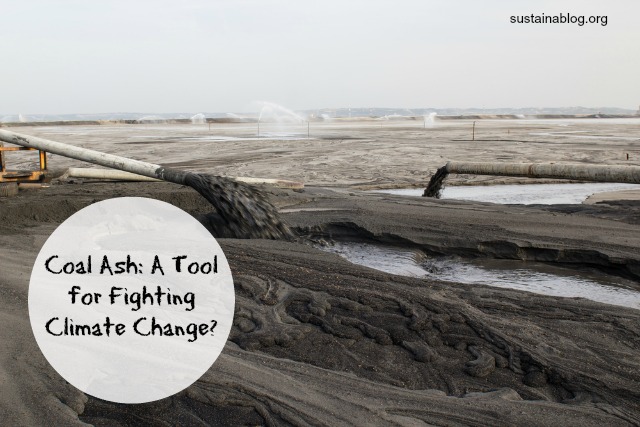Our typical reaction to industrial waste products like coal ash? Stop producing it by finding another, cleaner energy source. That’s a viable long-term strategy, but (unfortunately) we’re not going to stop burning coal tomorrow. Nor are we going to stop making steel or aluminum, which also produce some pretty nasty byproducts.
While the wastes from these processes can take a number of different forms – ash, sludge, or mud – the all do the same thing when they meet up with water: “…rapidly create bleach-like solutions” that pose a threat to water sources, and the plants and animals that depend on them. That quality also makes the normal means of disposing of these materials – landfilling them – problematic, as they’ll likely meet up with water and turn into an alkaline leachate that works its way into the watershed.
We’ve pointed to a number of ways scientists and engineers have figured out how to reuse some of these materials, but a new paper from researchers at the UK’s University of Hull points to another possibility: fighting climate change. The process of mineral carbonation – “the reaction of calcium and magnesium with gaseous CO2 to form stable mineral carbonates” – create a safe, stable form of sequestration: only acid or temperatures above 900 degrees Celsius can release the carbon. In fact, red mud, a byproduct of aluminum production, has already sequestered 100 megatonnes (just over 110 million tons) of CO2 since the late 19th century without any effort on the part of industry.
The paper’s authors note that these industrial waste products have other potential benefits: they contain metals, for instance, that could be “mined” from them. And, of course, there are those reuses that we’ve mentioned. None of this need be hampered by using these wastes to also capture excess carbon.
No doubt – especially in the case of coal ash – that reducing the amount of these wastes is the smartest move… but as long as they’re being produced, putting them to good use is definitely preferable to landfilling. Got a better grasp of the science than I do? Share your thoughts on the possibilities for these toxic pollutants.
Photo credit: Shutterstock

